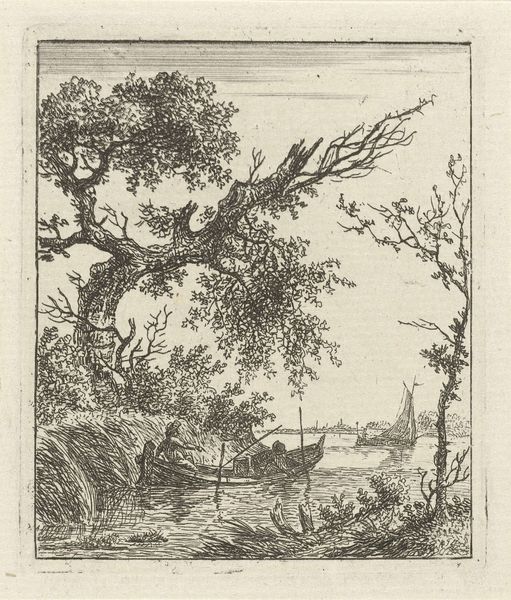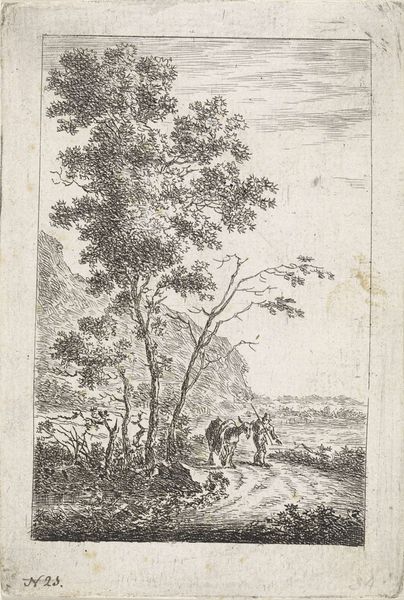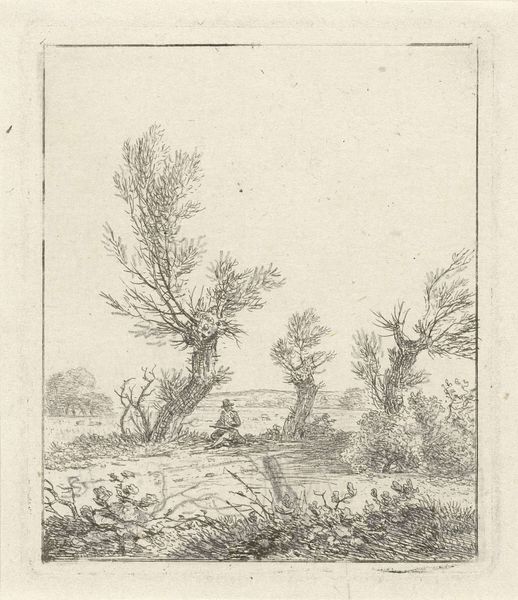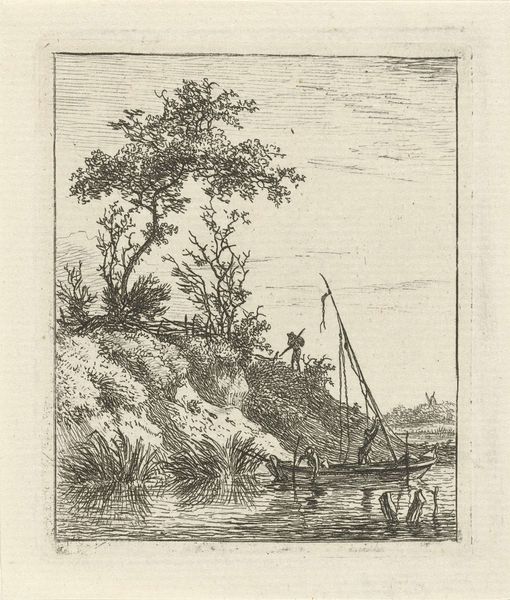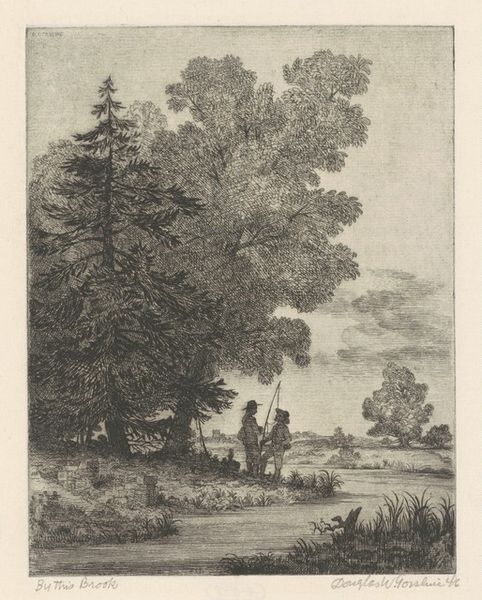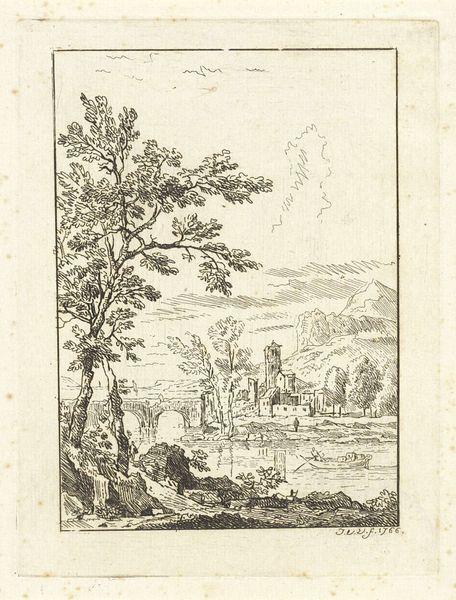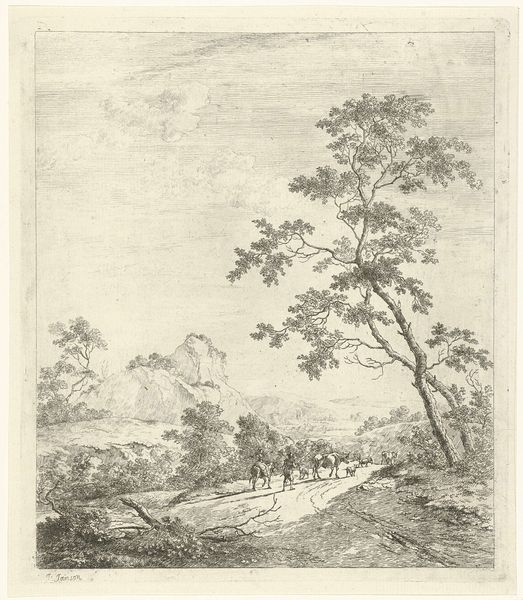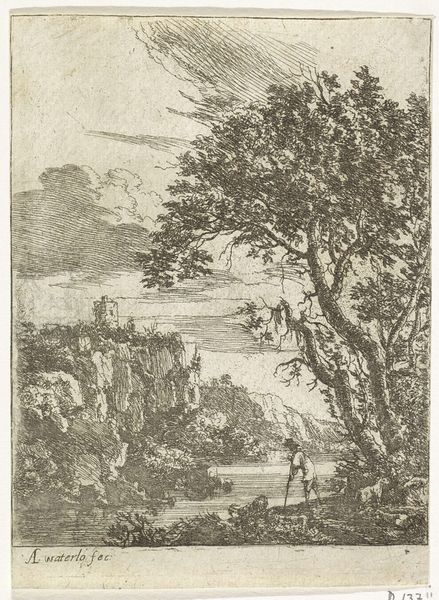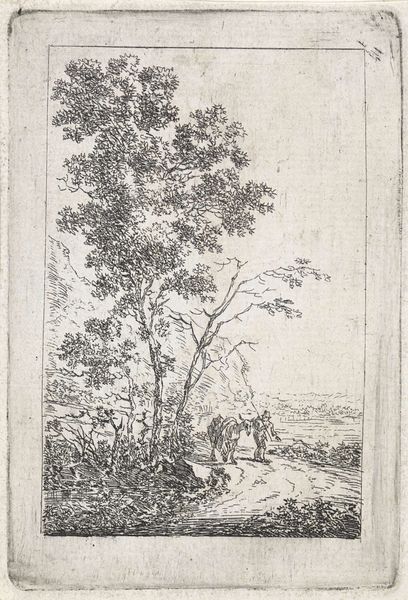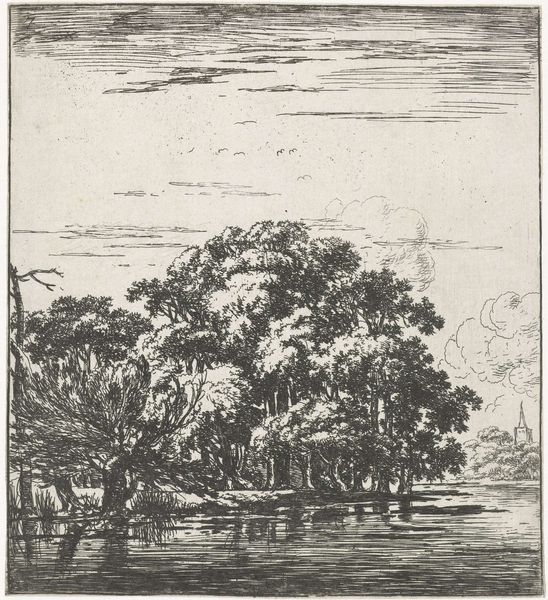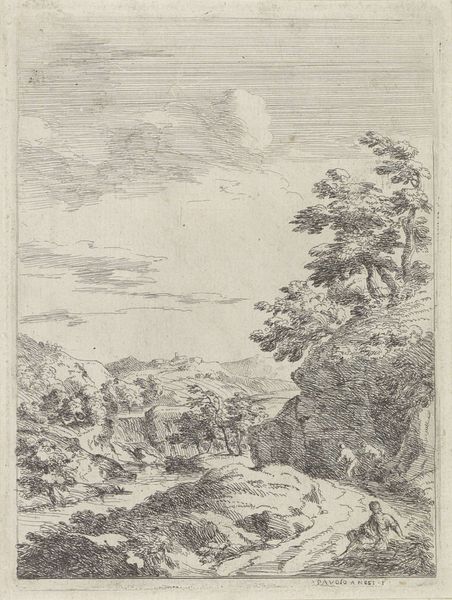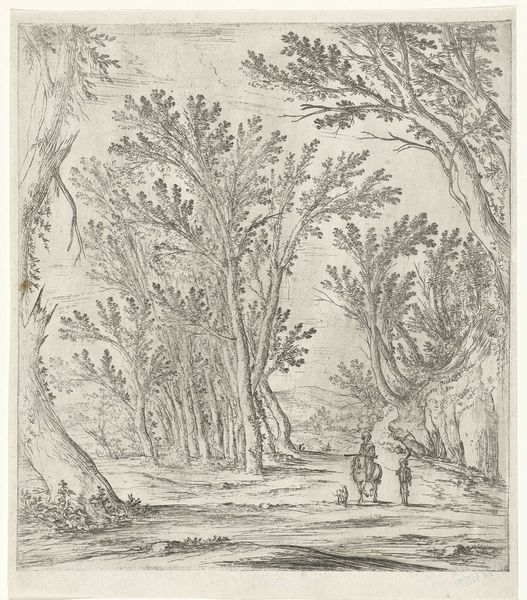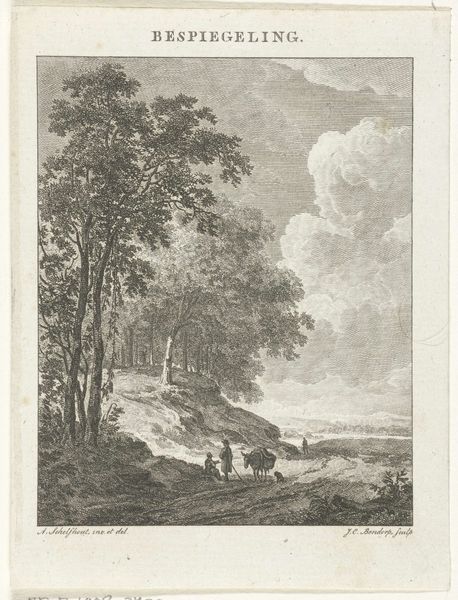
print, etching
# print
#
etching
#
landscape
#
genre-painting
#
realism
Dimensions: height 151 mm, width 92 mm
Copyright: Rijks Museum: Open Domain
Editor: Here we have Joseph Hartogensis's etching, "Weidelandschap met sloot," possibly from 1854. There's a real quietness to the scene, a pastoral idyll of sorts. The detail is impressive for a print, but what's most striking is the contrast between the dark foreground and the brighter, more distant landscape. How do you interpret this work? Curator: I see a careful construction of space reflecting social access and labor. The darker, densely etched foreground, where the figures in the boat reside, seems almost separate from the lighter, idealized background. This visual separation could represent the social divisions present in the Dutch landscape at that time. What does "idyll" mean here when labor shapes the image? Editor: That's an interesting point. I was thinking of "idyll" more in terms of the serene natural setting. But you're right, we can't ignore the presence of those working in the fields and on the water, shaping that environment. Are you suggesting this landscape isn't just a neutral observation, but a commentary on land use and ownership? Curator: Exactly. Landscape art, particularly during this period, often masks underlying power dynamics. Consider who owns the land, who works the land, and who gets to enjoy its beauty. Hartogensis shows figures performing labour, even while depicting it in this style, reminding us of how much work goes into imagining the land. Editor: I see what you mean. I guess I hadn't considered how a seemingly straightforward image could contain those layers of social and economic commentary. So it’s not enough to appreciate the technique or aesthetic; we need to ask, "Who benefits from this landscape?" Curator: Precisely. Art invites that deeper probing, challenging us to critically examine not just what we see, but the context surrounding its creation and reception. Editor: I'll definitely look at landscapes differently now. Thanks for the perspective. Curator: My pleasure. It is through such dialogues that we broaden our appreciation of art's ability to mirror and challenge social realities.
Comments
No comments
Be the first to comment and join the conversation on the ultimate creative platform.
